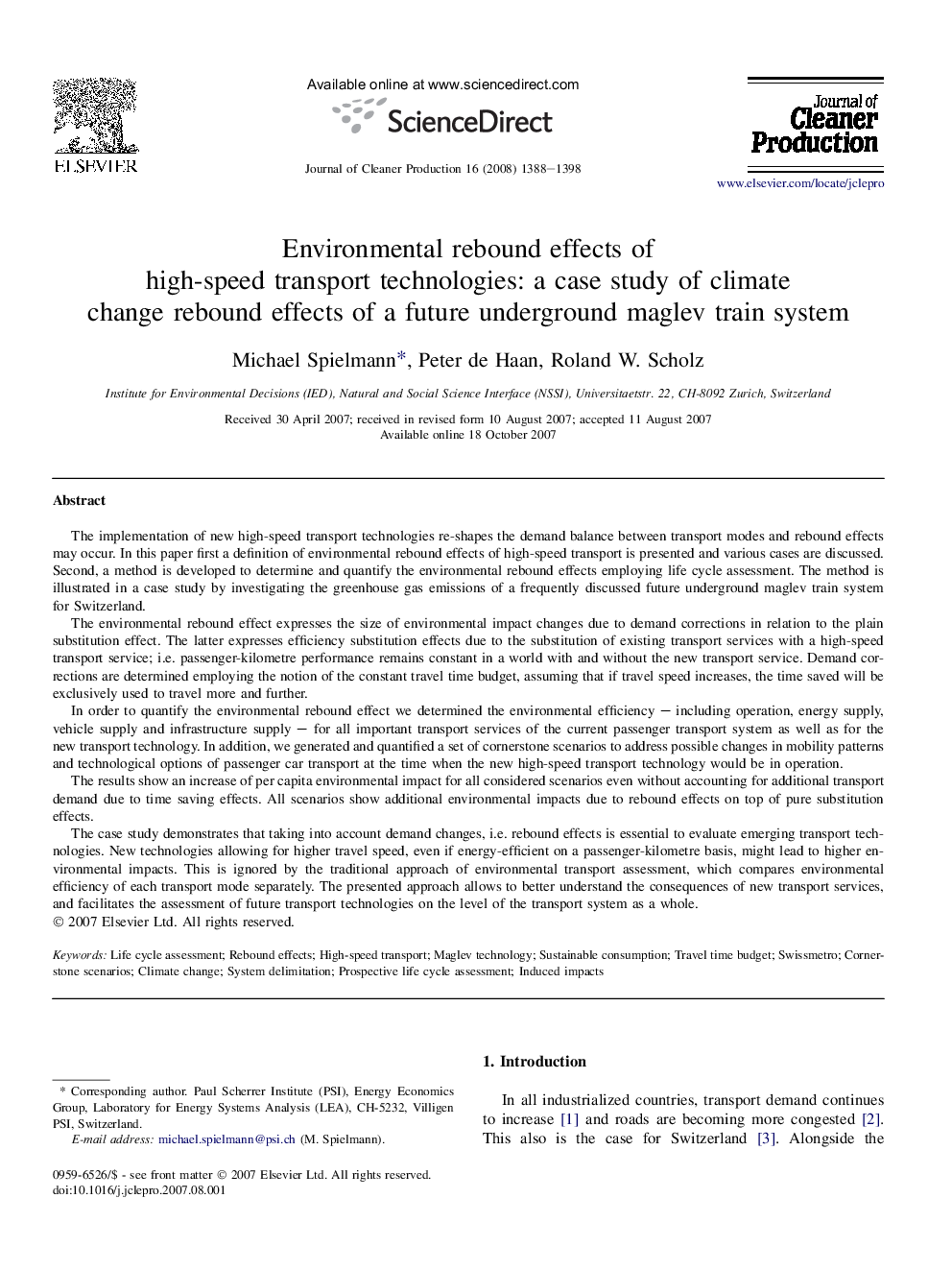| کد مقاله | کد نشریه | سال انتشار | مقاله انگلیسی | نسخه تمام متن |
|---|---|---|---|---|
| 1746454 | 1018097 | 2008 | 11 صفحه PDF | دانلود رایگان |

The implementation of new high-speed transport technologies re-shapes the demand balance between transport modes and rebound effects may occur. In this paper first a definition of environmental rebound effects of high-speed transport is presented and various cases are discussed. Second, a method is developed to determine and quantify the environmental rebound effects employing life cycle assessment. The method is illustrated in a case study by investigating the greenhouse gas emissions of a frequently discussed future underground maglev train system for Switzerland.The environmental rebound effect expresses the size of environmental impact changes due to demand corrections in relation to the plain substitution effect. The latter expresses efficiency substitution effects due to the substitution of existing transport services with a high-speed transport service; i.e. passenger-kilometre performance remains constant in a world with and without the new transport service. Demand corrections are determined employing the notion of the constant travel time budget, assuming that if travel speed increases, the time saved will be exclusively used to travel more and further.In order to quantify the environmental rebound effect we determined the environmental efficiency – including operation, energy supply, vehicle supply and infrastructure supply – for all important transport services of the current passenger transport system as well as for the new transport technology. In addition, we generated and quantified a set of cornerstone scenarios to address possible changes in mobility patterns and technological options of passenger car transport at the time when the new high-speed transport technology would be in operation.The results show an increase of per capita environmental impact for all considered scenarios even without accounting for additional transport demand due to time saving effects. All scenarios show additional environmental impacts due to rebound effects on top of pure substitution effects.The case study demonstrates that taking into account demand changes, i.e. rebound effects is essential to evaluate emerging transport technologies. New technologies allowing for higher travel speed, even if energy-efficient on a passenger-kilometre basis, might lead to higher environmental impacts. This is ignored by the traditional approach of environmental transport assessment, which compares environmental efficiency of each transport mode separately. The presented approach allows to better understand the consequences of new transport services, and facilitates the assessment of future transport technologies on the level of the transport system as a whole.
Journal: Journal of Cleaner Production - Volume 16, Issue 13, September 2008, Pages 1388–1398